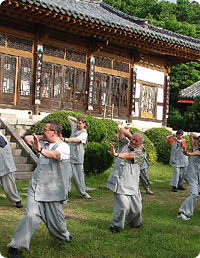SPECIAL INTEREST
Catholic Pilgrim (A) 5 days
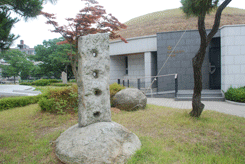
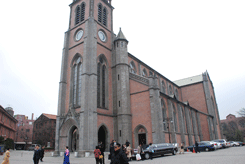
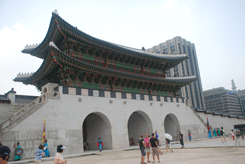
Tour Highlights
- Myeongdong Cathedral
- Saenamteo Execution Site
- Jeoldudan Beheading Hill
- Gyeongbokgung Palace
- National Folk Museum of Korea
- Insadong
- Namdaemun Market
- Cheonjinam Holy Ground
- Mirinae Holy Ground
- Oeammaeul village
- Haemi Fortress
- Solmoe Holy Ground
- Hwaseong Fortress
Click on the days to access the programs quick
| Days | Visits and Activities | Distance |
| Day 1 | Arrive Seoul | 60km |
| Day 2 | Seoul | |
| Day 3 | Seoul - Gwangju - Anseong - Asan | 210km |
| Day 4 | Asan - Haemi - Dangjin - Suwon - Seoul | 200km |
| Day 5 | Departure | 60km |
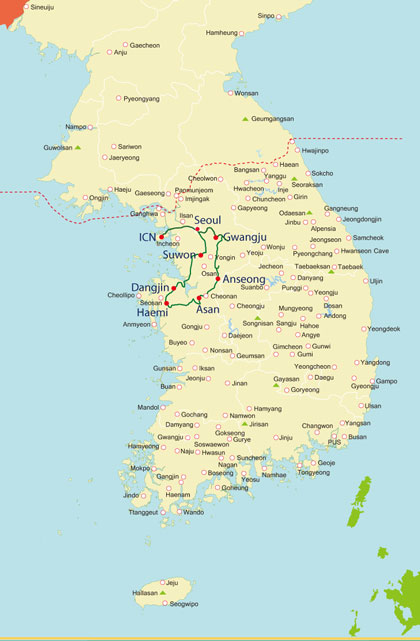 Day 1 Arrive Seoul (- - -) 60km
Day 1 Arrive Seoul (- - -) 60km
Touching down at Incheon International Airport places you in the heart of Korea. After you clear Passport and Customs control, you will be welcomed by the tour guide and then transferred to your hotel.
Day 2 Seoul (B)
Catholicism had a bloody beginning in Korea, as its early years were marked by persecution and martyrdom. Your pilgrim this morning begins with a visit to Myeongdong Cathedral. The holiest Catholic ground in Korea, the cathedral is the birthplace of Catholicism in this country and holds the remains of martyrs who gave their lives to realize their religious beliefs. It is the Korea's first Gothic building and an important milestone in the country's architectural history.
Saenamteo is in proximity to the Han River used to serve as the training ground for soldiers from early Joseon period. It is also where those found guilty of heavy crimes were executed. In 1456, the six administrators who remained loyal to the dethroned king were executed. It was also a persecution ground for Catholics, where many followers were put to death in 1801, 1839, 1846 and 1866 following major crackdowns against the religion. Eleven religious leaders including Korea's first priest Kim Dae-geon (Andrea), the first Chinese priest to enter Korea Zhou Wen Mo, the first foreign bishop to visit Korea, the French Imbert were martyred here as well as many followers. Today there is a cathedral commemorating the 200 years history of Catholicism in Korea.
Jeoldusan is a spot near a cliff along the Han River. When French navy ships sailed up the Han River in February 1866 to protest the Catholic persecution, the enraged ruler Daewongun ordered the beheading of a mass of followers. The execution took place in Jamdubong hill which was henceforth known as Jeoldusan, or beheading mountain. The Korean Catholic church opened a memorial in October 1967 in tribute to the martyrs 100 years ago. The memorial in Jeoldusan today holds historic materials on the religion in Korea, articles once belonging to the dead, as well as the 28 remains of martyrs, a pilgrim church, education hall and an outdoor exhibition space. In 1996, a church was built in remembrance of the martyrs. Here you will find a statue of Father Kim Dae-geon, Korea's first catholic priest who was martyred in 1846 in Saenamteo. It was also visited by Pope John Paul II in 1984 when he came to Korea for the canonization mass.
Then, driving tour of Seoul, featuring sites such as Seoul Plaza, City Hall, Cheonggye Square and pedestrian-friendly Gwanghwamun Plaza that is hemmed in on both sides by rushing traffic and office buildings. The plaza is lined on each side with 365m long streamlets, two centimeters deep and one meter across, the stone bed of the plaza's east side waterway engraved with important events in chronological order from 1392 to 2008.
Standing high on a stone pillar is a statue of Yi Sunsin who had engaged in twenty-three naval battles and emerged victorious in all of them during the Hideyoshi invasion (1592-1598). King Sejong who propagated the Korean alphabet in the 15th century is also honored with prominent statue. On August 16, 2014, Pope Francis celebrated Mass in this plaza to beatify 124 Korean martyrs. Near the southwest corner of the plaza is Korea's Kilometer Zero, marking the distances to 64 cities around the world, including Seoul's antipode, Montevideo, Uruguay, 19,606km.
Step back in time to when life was gracefully slow and discover Gyeongbokgung Palace, a particularly charming spot that represents a colorful and turbulent side of the capital's 500-year history. Depending on timing, you may witness the Royal Guard Changing Ceremony featuring parade, password verification, duty shift and patrolling the gate. Accompanied by a court band with its colorful costumes and royal flags, the ceremony is performed daily basis at 10:00 and 14:00 except Tuesdays, although it is cancelled in case of rain or extremely hot or cold weather.
Up from the gates is a spacious stone-paved courtyard that is fully enclosed by wooden cloisters, and at the center of which runs three footpaths through two rows of rank stones, indicating the positions of the officials with the highest rank being closer to the hall.
Standing majestically on top of a two-tiered stone platform that is lined with detailed balustrades is Geunjeongjeon Hall, where the king formally granted audiences to his officials, gave declarations of national importance, presided over large official functions, and greeted foreign envoys and ambassadors. Check out the royal throne and a large painting, depicting sun, moon, five peaks, streams and pine trees, which was the crucial signifier of the king. And up in the center of the ceiling, the bright golden dragons in bold relief indicate the presence of the king.
At the back of the throne hall is a group of court offices. Displayed in front of the King's official quarters is sundial, conceived in order to catch the shadow of the sun, which tells time and 24 periods of seasonal change from the winter solstice to the summer solstice.
Sitting on the island in the rectangular lake is Gyeonghoeru. Supported by 48 square and cylindrical massive stone pillars representing the idea of Yin and Yang, this magnificent pavilion was used for many purposes ranging from receptions to national examinations.
Gangnyeongjeon is the king's sleeping and living quarters while Gyotaejeon is the queen's domain containing a number of halls. The noted feature of these main buildings is an absence of a top roof ridge.
Amisan Garden, landscaped with four hexagonal chimneys in orange bricks, is seldom noticed by the hurried visitors. Jagyeongjeon is the queen dowager's residence. Although less colorful, it is worth noting the wall, adorned with floral designs and the chimneys with ten longevity symbols.
Hyangwonjeong features a small pond with a manmade islet that supports a beautiful two-story pavilion. Behind this serene garden is Geoncheonggung, where the king and queen could relax in peace and quiet. It was here that the first electric lights in the country were installed in 1887 after 8 years of Thomas Edison's invention and a tragic chapter in Korea's history was recorded when empress Myeongseong was assassinated by the sword-bearing Japanese assassins in the early morning of 8 October 1895, allegedly under orders from Miura Goro.
Your visit to the National Folk Museum of Korea will familiarize you with wealthy culture of this friendly and picturesque nation. It is an excellent facility to illustrate the history of traditional life of the Korean people from the prehistoric age to the Joseon dynasty. The permanent exhibition features life and work, costumes and ornaments, handicrafts and technology, educations, living quarters, dietary life, oriental medicine, performing arts and games, beliefs and rituals, and
socio cultural life.
Insadong, at one time the center of traditional Korean art and antiques, features a mixture of historical and modern atmosphere representing the cultural glimpse of the nation. Clustered along the main street and alleys are lined with street vendors, wooden tea houses, restaurants and numerous galleries and shops dealing in antiques, oriental art supplies, and modern Korean art of all types and styles. Soak in the paintings, upscale artworks, antiques and potteries while you can. Get lucky and you just might meet the artist themselves. It can be plenty of fun walking on the main street, but you venture into the hidden alleys that do spring some unexpected surprises. While here, you may want to buy some souvenirs or simply wander and browse at leisure admiring cultural ambience.
Drive past Cheonggyecheon Stream. After the Korean War (1950-1953), more people migrated into Seoul to make their living and settled down along the stream in shabby makeshift houses. The accompanying trash and waste, and deteriorating conditions resulted in an eyesore for the city. The stream was covered with layers of concrete in the mid 1950s and roadway until the massive urban renewal project freed it in 2005. Today, a 5.8km creek tumbles gently through downtown Seoul, providing a much needed source of peace and relaxation for the citizens of this fast-paced city. You may have a chance to view the sculpture standing tall at the head of the stream on a small plaza. Created by Dutch artist Coosje Van Bruggen and Swedish artist Claes Oldenburg, a shell rising upward like pagoda symbolizes new life.
You will tour the centuries-old Namdaemun Market brimming with well over 11,000 shops selling anything you can imagine. One of the most colorful aspects of the market is an endless sprawl of street-vendor stalls that setup in the alleys and walkways between the buildings. The market is seriously crowded, so be prepared to get bumped around. A fantastic place to haggle over the price to get the best deal on something you want or simply admire the vibrancy of this massive market.
At the western entrance of the market in the middle of a traffic circle stands Sungnyemun. It is a formidable and iconic construct that served as the southern gate of the wall that surrounded Seoul during the period of the Joseon Dynasty.
Day 3 Seoul - Gwangju - Anseong - Asan (B) 210km
Cheonjinam was originally home to a Buddhist temple (Jueosa), and it is where Korean Catholicism was born. It initially served as a forum for academic discussions on Confucianism in the mid-18th century, and its Catholic contribution was long unrecognized. However, historic records and headstone scripts attest to the place's significance as the Catholic origin of Korea. It is where Lee Byeok, profoundly moved by Matteo Ricci's De Deo Verax Disputatio, turned a study group into a religious gathering in 1779. He also urged Lee Seung-hun to go to Beijing to be baptized, which he did in 1784. After being baptized by a French priest in the Beijing church, Lee Seung-hun came back to Korea in the autumn of 1784 with religious books, medals, statues and other holy materials. Lee Seung-hun in turn baptized Lee Byeok who went on an active proselytizing campaign. His efforts soon drew pressure and threats from the society and the courts, and Lee was soon placed under house arrest. During this time he refused to drink or eat or even change clothes, devoting himself wholly to praying and meditating on Catholicism. But fifteen days of fasting and meditation completely drained him and he passed away on June 14, 1785 (lunar calendar) at the age of 32. He remained true to his faith until his last moment. Cheonjinam holds a large space available for outdoor masses, the 200th year anniversary monument of the church and a cemetery of the five founding members Jeong Yak-yong, Lee Byeok, Gwon Cheol-shin, Gwon Il-shin and Lee Seung-hun. Stay overnight in Icheon, a city that is also the cradle of Korean porcelain.
Mirinae is the place where the faithful gathered together and created a community at the time of harshest persecution in 1801 and 1839. At the entrance of Mirinae is a magnificent cathedral built in commemoration of the canonization of 103 saints. Behind the church building are a series of bronze statues that chronicle the tribulations of Jesus from his capture by the Roman soldiers to crucifixion and entombment. You will also see the grave site of martyr Kim Dae-geon, and a hall holding father Kim's remains and the Gethsemane hill.
You will visit Onyang folklore museum featuring traditional livelihood, industry, culture, folk paintings and artworks. The museum exhibits a vast array of beautiful and priceless antiques that speak to the life and traditions of the Korean people.
Oeammaeul is one of the traditional clan villages exuding old and rustic charm. The village entrance is marked by stone bridge, pine forest and totem poles. This village with more than 400 years of history has about 70 traditional houses, and is highlighted by 6km-long stonewall paths ringing the village and the amazing artificial water system that goes through the entire village for gardens and agriculture. As you stroll along the pathway, you will see thatched cottages and tile roof houses representing typical village layout of central Korea and at the same time feel the rural ambience and peaceful atmosphere.
Day 4 Asan - Haemi - Dangjin - Suwon - Seoul (B) 200km
You will visit Haemi Fortress and learn about the holy place for the Catholics. Haemi has been the military base since the construction of fortress in 1491. The fortress has an oval shape and measures 5m high and 1,810m long. Architecture aside, Haemi Fortress's historical importance is closely tied with the history of the Catholic Church in Korea. It was here that many Catholics were executed during the Byeongin Persecution of 1866, and the fortress and its surroundings are considered holy ground by Korean Catholics. The memorial is dedicated to those who martyred here. The rock to the right of the memorial is particularly macabre - some of the victims were executed by ramming their heads repeatedly into the stone. Near the fortress is Yeosutgol holy site, where Catholics were buried alive, drowned and otherwise made dead en masse. The pope Francis visited the Haemi Martyrdom Holy Ground and the Haemi Fortress to meet with Asian bishops and closing mass for Asian Youth Day on August 17, 2014 during his five days trip to Korea.
Next up is Solmoe holy ground. It is the birthplace of St. Andrew Kim Dae-geon (1821-1846), who was the first Korean Catholic priest, and where the Catholic religion took root in Korea. Four generations of the Kim family, all of whom were martyred, were born and lived here. The Path of the Cross features a mosaic path showing the hands of Jesus and a bronze path on a large scale. A walk up the pine tree road leads to a bronze statue of the priest holding a bible in his left hand and delivering the message of the Gospel. Nearby is the Path of the Cross, symbolizing the path of the ordeal that Jesus had to walk carrying a cross to his crucifixion as detailed in the Christian Bible.
The Solmoe Holy Ground memorial hall has on display various documents on the life of Priest Kim Dae-geon, detailing the persecution of members of the Korean Catholic Church, and letters and reports on martyrs written by the priest. The Path of the Cross features a mosaic path showing the hands of Jesus and a bronze path on a large scale. This is where many Catholic pilgrims pray or meditate while walking among pine trees. This Holy Ground is of major significance as one of the sites Pope Francis visited during his official visit to Korea. The papal trip is all the more momentous as it is his first visit to Asia and he will only be visiting Korea.
Later, explore UNESCO World Heritage site of Hwaseong Fortress from the 18th century. Though it is relatively small in scale, it is well acknowledged as the best structure of its kind ever built in Korea. A 5.74km-long fortress enclosing both flatland and hilly terrain is parapeted with crenels and merlons and highlighted by four main gates and well over 50 structures including temporary palace where the king sought refuge during war and found rest during times of peace. A walk through the whole fortress could take several hours but it is well worth making a short walking tour to enjoy the splendor of the fortress, including the Korea's largest Janganmun Gate.
Day 5 Departure (B) 60km
After this wonderful trip exploring Korea and with time to reflect on your surprise in your experience, you will return to the airport in time for your flight. By boarding, you are already high above Incheon heading for home.





